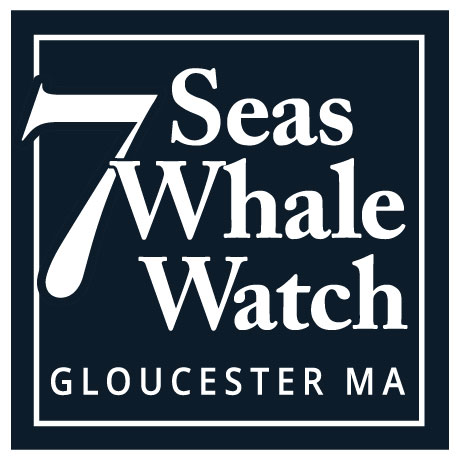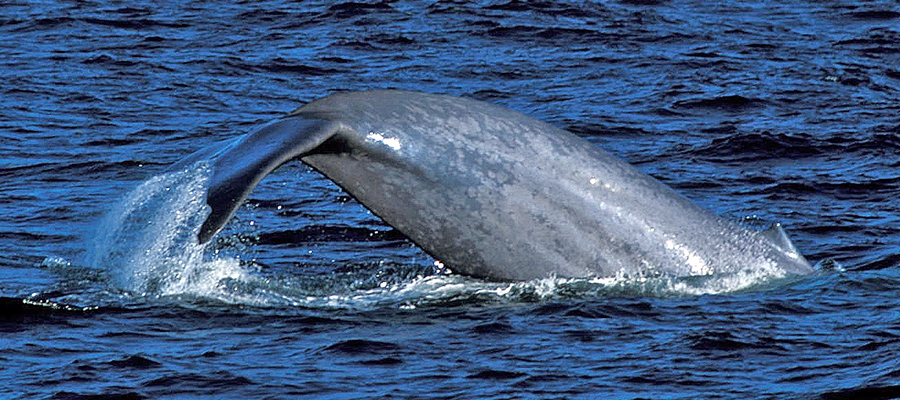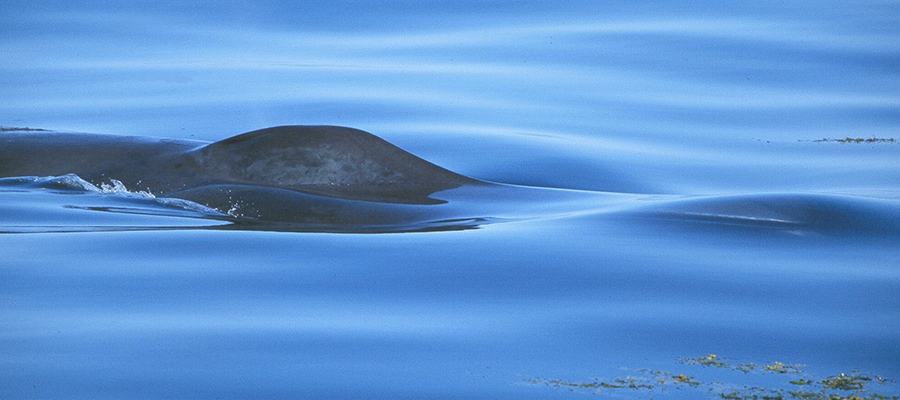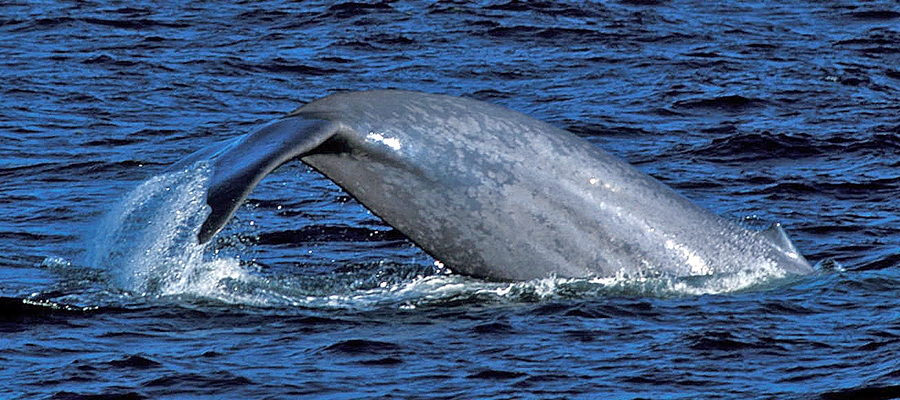Blue Whale
(Balaenoptera musculus)
A rare but possibly increasing visitor to our area is the biggest of all animals: the Blue Whale. These giants are usually found much farther north feeding on swarms of blood-red, shrimp-like crustaceans called “Krill”.
The first ever confirmed record of this species occurred near southern Jeffrey’s Ledge in 1986. That sighting was of a lone individual that did not remain in the area as it was only seen on one afternoon/evening.
Then in 2002, at least three individual Blue whales were sighted repeatedly in various locations around Jeffrey’s Ledge and Stellwagen Bank. Because they remained in the area for an extended period, many people were able to take advantage of the opportunity to see these massive and very endangered visitors from the far north.
Another lone adult was seen in the summer of 2004 in a deep water area between Stellwagen Bank and Jeffrey’s Ledge and yet another Blue Whale (this time a well-known adult female animal is known as B422) was seen in the same area in 2011.
While the chances of seeing a Blue whale on any given whale watch out of Gloucester (or any Massachusetts/New England port for that matter) are still very slim, whale watchers should still be familiar with the field marks of this species because, when conditions are right, Blue whales have shown the willingness to follow their prey this far south.
Blue whales can be told from Fin Whales not so much by their larger size, for Fin whales can be nearly as long as Blue whales, but by their greater bulk, spotted blue-gray coloration, and by the relatively tiny dorsal fin that is situated far back on the whale’s body (relative to other large baleen whales). The Blue Whale also lacks the asymmetrical coloration of the Fin whale.




